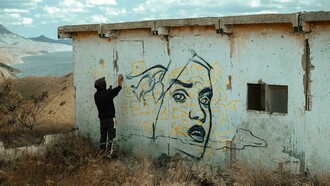With the official inauguration of the new location the Institute of Contemporary Art Miami just opened ‘The Everywhere Studio’, a major group exhibition exploring the significance of the artist’s studio, from the post-war period to the present day. Encompassing some 100 works in painting, sculpture, video, and installation, ‘The Everywhere Studio’ brings together over 50 artists from the past five decades to reveal the artist’s studio as a charged site that has both predicted and responded to broader social and economic changes of our time.
The works in this exhibition, curated by ICA Miami Deputy Director and Chief Curator Alex Gartenfeld, Curator of Programs Gean Moreno, and Assistant Curator Stephanie Seidel, investigate the artist’s life and their habitat, from the point of view of the artists themselves. Therefore, all works can be interpreted as self-portraits and direct foretelling and epitomizing societal shifts and providing insight on influential forces in contemporary life that relate to us all.
The exhibition is organized chronologically and begins by examining the radical shifts that occurred in the artists’ studio practice during the 1960s, followed by artists/ works of the 1970s which treated the studio as both a stage and creator of persona. Later works from the 1990s exemplify the hyper-production and disorientation expressed by artists in response to globalization, the importance of networks, and an economy increasingly centered around the exchange of information. The exhibition concludes with works by emerging artists which provide critical insight into the continued relevance of the artist’s studio in understanding pervasive elements of contemporary life, such as the rapid exchange of information and emphasis on performance and spectacle.
The visitor can experience works by nonetheless than historically acclaimed artists such as Pablo Picasso (depicting an artist painting in his studio), Carolee Schneeman (a gelatin silver print self-portrait) or Jason Rhoades (showcased with an installation of an unordered work environment), along works by most current and forward-looking artists who emphasize the relationships to their sites of production. The large scale installation by Anna Oppermann ‘Paradoxe Intentionen’ (1988-92) is such an example. An assemblage of objects, texts, photographs, colored photo-canvases and paintings, interweave highly diverse, sometimes conflicting elements and express the artist’s experience of the complexity of the world with all its contrasts. Or Andrea Zittel’s ‘Free Running Rhythm and Patterns Version II (2000), which questions the ephemeral and pervasive structure of time in contrast to our believe that physical structures such as architecture, interior design, and urban layouts influence our perceptions and actions when we live within them. Highlight of the exhibition are the new sculptures by Matthew Angelo Harrison, which incorporate 3D printers and which will theatrically produce new sculptures over the course of the exhibition that examine the relationship of labor to identity.
The exhibition reflects the museum’s expanded curatorial purview in its new home, which creates intergenerational dialogues between post-war and contemporary artists, and champions new narratives that provide insight into the most innovative artists working today.















